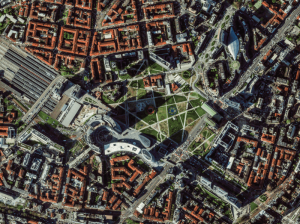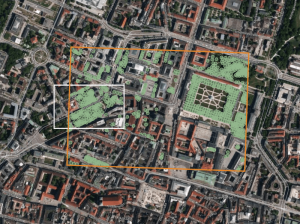WorldView-2 Satellite Coverage of European Urban Zones Nearing Completion
- European Space Imaging
European Space Imaging continues its acquisitions of Europe’s cities with WorldView-2, the world’s most advanced VHR satellite.
European Space Imaging started the coverage in 2011 on a speculative basis in support of the Copernicus/GMES Urban Atlas project. Until today, already more than 80% of all European urban zones have been collected cloud-free.
The areas in collection are based on the GMES-Copernicus Urban Atlas project zones. The Urban Atlas provides pan-European comparable land use and land cover data for 305 Large Urban Zones with more than 100,000 inhabitants in Europe. The Urban Atlas is a joint initiative of the European Commission Directorate-General for Regional Policy and the Directorate-General for Enterprise and Industry with the support of the European Space Agency and the European Environment Agency.
European Space Imaging with the support of its partners DigitalGlobe and the German Aerospace Center (DLR) plans and collects the imagery through its local ground receiving station which offers collection flexibility, maximizes capacity and delivers highest quality.
WorldView-2’s 8-band multispectral imagery provides unique capabilities for classification, vegetation and bathymetry applications. This first homogeneous coverage supports various EU, national and regional projects, such as update of Urban Atlas, other Copernicus services, national/regional mapping programs.
European Space Imaging expects to complete all collections by this summer.
About GMES-Copernicus
As the most ambitious Earth observation programme to date, the EU Copernicus programme for Global Monitoring for Environment and Security (GMES) will provide, accurate, timely and easily accessible information to improve the management of the environment, understand and mitigate the effects of climate change and ensure civil security.
About European Space Imaging
European Space Imaging is a leading supplier of very high-resolution satellite imagery to customers in Europe and North Africa. The company was founded in 2002 and is based in Munich, Germany. EUSI is the only European satellite data provider that operates its own very high-resolution satellite ground station for direct satellite tasking and local data downlink.
Related Stories

Europe’s Green and Digital Transformations with 25 Years of VHR Satellite Archive Data
Planning Europe’s future without knowing its past is impossible. The European Green Deal, Horizon Europe, the EU Biodiversity Strategy for 2030 and other policies all demand one thing: evidence. Not just today’s data, but years of history that show how our cities, forests, and coastlines have changed.

AI Uses 15 cm Satellite Images to Cut Costs and Increase Scalability in Forest Management and Urban Forestry
Forest managers across Europe face an impossible task: monitor millions of hectares with shrinking budgets while meeting increasingly strict EU environmental targets. But with the rise of AI and satellite technology, they now have new solutions at their disposal – smarter, cheaper, and more scalable – to monitor forest health, automate tree inventories, and plan sustainable logging. In this article, we introduce one of these solutions: an AI forestry algorithm developed by Arboair using 15 cm satellite data from EUSI.

GEOSeries: Extracting Insights From High Resolution SAR Imagery for Time-Sensitive Analysis
In this webinar, industry experts and advanced users of Umbra SAR data showcase how they transform SAR imagery into actionable insights in real-world mapping, monitoring and intelligence applications. See how NV5 and Umbra leverage ENVI SAR Essentials for advanced processing with time-efficient results, converting analytics into valuable intelligence.

Using Satellite Imagery to Build Water Resilience Across Europe
Water across Europe is facing severe pressure. Climate change, urbanisation, agricultural demands and other sources of pollution are threatening water security and creating critical challenges that need to be addressed. We have to act quickly, build stronger systems and create sustainable water resilience practices – so that both natural ecosystems and human communities can thrive. Here is how satellite imagery from EUSI can help.





